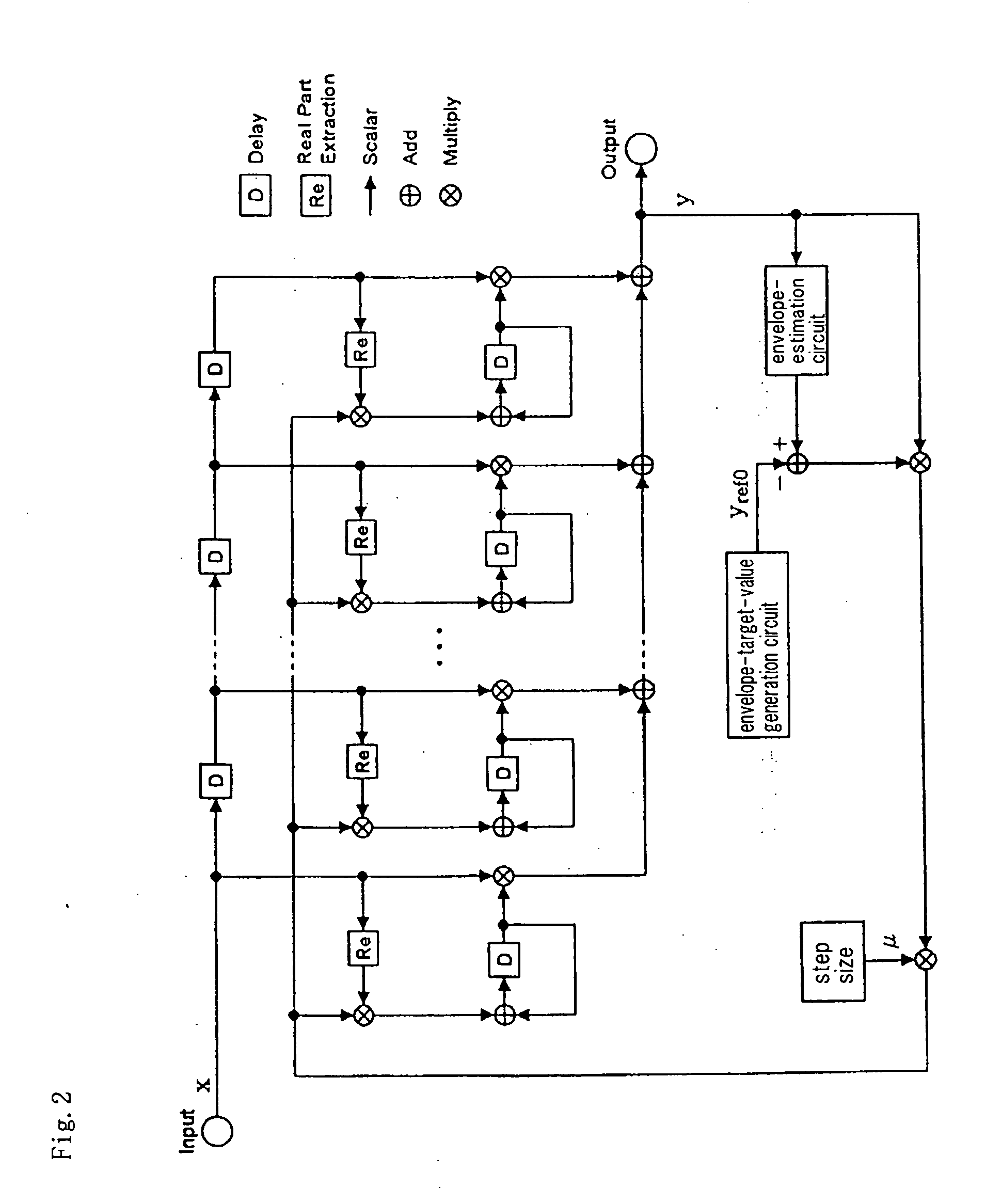Adaptive Digital Filter, FM Receiver, Signal Processing Method, and Program
a digital filter and adaptive technology, applied in the field of adaptive digital filters, can solve the problems of large amount of operation, large amount of hardware overall, large amount of hardware, etc., and achieve the effect of reducing the amount of signal processing operations for realizing an adaptive digital filter
- Summary
- Abstract
- Description
- Claims
- Application Information
AI Technical Summary
Benefits of technology
Problems solved by technology
Method used
Image
Examples
first exemplary embodiment
[0059]Explanation next regards the configuration of an adaptive digital filter of an exemplary embodiment of the present invention. FIG. 3 is a block diagram showing an example of the configuration of an adaptive digital filter according to the present exemplary embodiment.
[0060]Referring to FIG. 3, the adaptive digital filter according to the exemplary embodiment of the present invention is provided with: a filter unit for generating an output signal that is a complex signal (complex output signal) by means of convolution operations of a complex signal (complex input signal) received as input by way of input terminal 301 and filter coefficients (real filter coefficients) that are real signals and for supplying the output to output terminal 302; and a coefficient control unit for controlling filter coefficients based on the error between a target signal and an index value derived from the complex output signal (in the present exemplary embodiment, the value of the envelope). In FIG....
second exemplary embodiment
[0090]Explanation next regards the adaptive digital filter according to the second exemplary embodiment of the present invention using the block diagram of FIG. 6. Common unit 318 of the coefficient control unit shown in FIG. 3 has been omitted from the figure.
[0091]Referring to FIG. 6, the adaptive digital filter according to the second exemplary embodiment of the present invention differs from the adaptive digital filter according to the first exemplary embodiment of FIG. 3 in that the input signal that is received as input by way of input terminal 301 is transmitted through M−1 delay units 3391-339M-1 and branch line 349 to effect a delay of (M−1) samples.
[0092]In the present exemplary embodiment, M−1 delay units 3391-339M-1 are newly required, but the signal transmitted by branch line 349 to adder 338 is the same as in the first exemplary embodiment and the same effect can therefore be obtained as in the first exemplary embodiment.
third exemplary embodiment
[0093]Explanation next regards the adaptive digital filter according to the third exemplary embodiment of the present invention using the block diagram of FIG. 7.
[0094]Referring to FIG. 7, the adaptive digital filter according to the third exemplary embodiment of the present invention is provided with: a filter unit for generating an output signal that is a complex signal (complex output signal) by means of convolution operations of a complex signal (complex input signal) received as input by way of input terminal 301 and filter coefficients that are complex signals (complex filter coefficients) to supply the complex output signal to output terminal 302; and a coefficient control unit for controlling filter coefficients based on the error between a target signal and an index value derived from the complex output signal (in the present exemplary embodiment, the value of the envelope). In FIG. 7, the portion of common unit 318 indicated by a broken-line block and the N separate units ...
PUM
 Login to View More
Login to View More Abstract
Description
Claims
Application Information
 Login to View More
Login to View More - R&D
- Intellectual Property
- Life Sciences
- Materials
- Tech Scout
- Unparalleled Data Quality
- Higher Quality Content
- 60% Fewer Hallucinations
Browse by: Latest US Patents, China's latest patents, Technical Efficacy Thesaurus, Application Domain, Technology Topic, Popular Technical Reports.
© 2025 PatSnap. All rights reserved.Legal|Privacy policy|Modern Slavery Act Transparency Statement|Sitemap|About US| Contact US: help@patsnap.com



